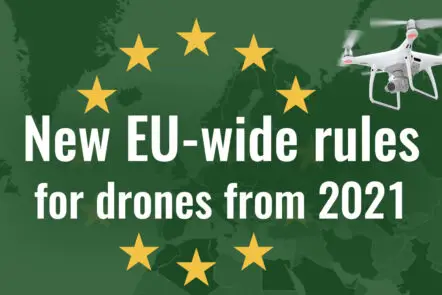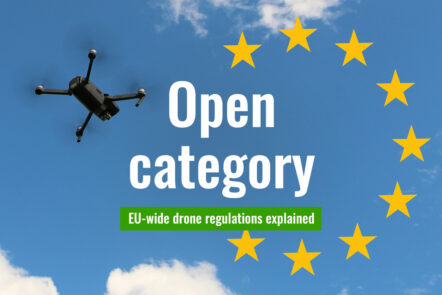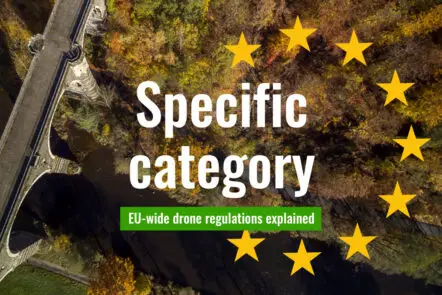Drone regulations in Belgium
Last update on 22.02.2023 | 5 Kommentare

In this article, you will find the current legislation for the use of drones in Belgium.
The EU Drone Regulation has been in force in Beglium since December 31, 2020. This has largely harmonized the rules for remote pilots. You only have to register as an operator in one European country and your EU drone license is also recognized across countries.
If you want to register in Belgium, you can do so via this link.
Overview of the European rules that apply in Belgium
In Belgium, the regulations of the European Aviation Safety Agency (EASA) apply. The following is a summary of the key facts. For a complete overview, read our article on the new EU drone regulation.
National peculiarities in Belgium
Each country can define certain aspects of its drone regulations. For Belgium, the following requirements apply in addition to the European regulations.
Further rules in Belgium
The minimum age for remote pilots in Belgium is not uniformly at 14 years. You have to be 16 years old to perform risky maneuvers. This includes flights in the sub-category A2 and the special category.
If you already have an old class 1 or class 2 permit in Belgium, these are still valid until January 1, 2022. The BCAA is responsible for new licenses under EU law.
We have researched the listed drone regulations for Belgium to the best of our knowledge. We can not guarantee the correctness of the information. If you want to be on the safe side, please contact the competent aviation authority. Alternatively, you can also ask the embassy in your country for further information about the regulations. Please leave us a comment when you receive news and/or gain experience with your copter in Belgium!
 EU-wide drone regulations: Classes of drones explained
EU-wide drone regulations: Classes of drones explained
 New EU-wide rules for drones from 2021
New EU-wide rules for drones from 2021
 EU-wide drone regulations: The Open category explained
EU-wide drone regulations: The Open category explained
 EU-wide drone regulations: The Specific category explained
EU-wide drone regulations: The Specific category explained
Summary of Belgian rules
https://mobilit.belgium.be/en/resource/asil_drone_flying
please correct the information on Belgium:
private use: 10m high only on personal property of property where you have a permission to fly
certificate class 2: 45 meters, <5kg
certificate class 1: 90 meters, <150 kg
for certificates class 1 & 2 you have to pass exam + registration of drone
Hi! Please help me. I just want to know if i can fly in fpv my 500g quadcopter. I practice freestyle flights.
these rules r wrong , get the official rules here ( pdf )
https://mobilit.belgium.be/sites/default/files/resources/files/asil_2017_01_drone_flying.pdf
o Private use: you do not want to fly your drone higher than 10m (32.8ft) above a private terrain and the
drone – weighing less than 1 kg (2.2lbs) – must be within line of sight at all times. These flights can
only happen during daylight.
o Use as model aircraft: A model aircraft is an aircraft with a take-off weight between 1 kg (2.2lbs) and
150 kg (330lbs) and used only for recreational purposes that is used above a model aircraft terrain
recognised by the BCAA. The drone must be kept within the airspace that is reserved for that model
aircraft terrain as specified in the Aeronautical Information Package (AIP).
o Class 2 operations: you do not want to fly your drone higher than 150ft (around 45m) above ground
outside controlled airspace and outside cities or communities. Operations can only occur in daylight
conditions and the drone – weighing less than 5 kg (11lbs) – must remain within the pilot’s line of sight
at all times.
o Class 1b operations: you want to fly your drone up to 300ft (around 90m) above ground outside
controlled airspace. Moreover, you stay more than 50m (164ft) clear from people and/or goods on the
ground. Operations can only occur in daylight conditions and the drone – weighing less than 150 kg
(330lbs) – must remain within line of sight at all times.
o Class 1a operations: you want to fly your drone up to 300ft (around 90m) above ground outside
controlled airspace. Moreover, you will come closer than 50m (164ft) from people and/or goods on the
ground or even overfly them or you will fly around an obstacle closer than 30m. Operations can only
occur in daylight conditions and the drone – weighing less than 150 kg (330lbs) – must remain within
line of sight at all times.
All operations that are not covered under the previous categories are to be considered as Class 1a operations.
Hi! Thanks for keeping us updated!